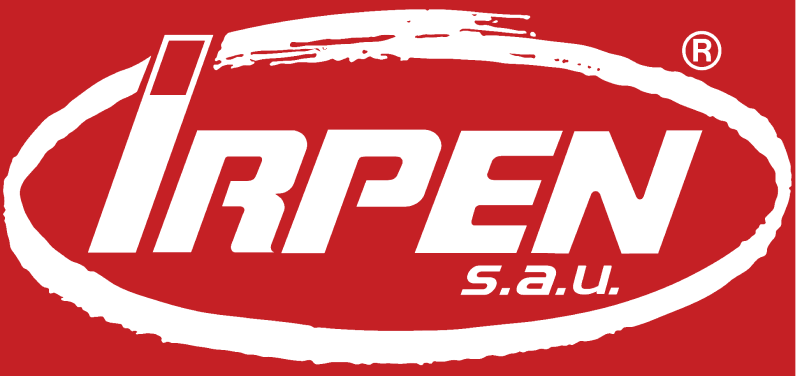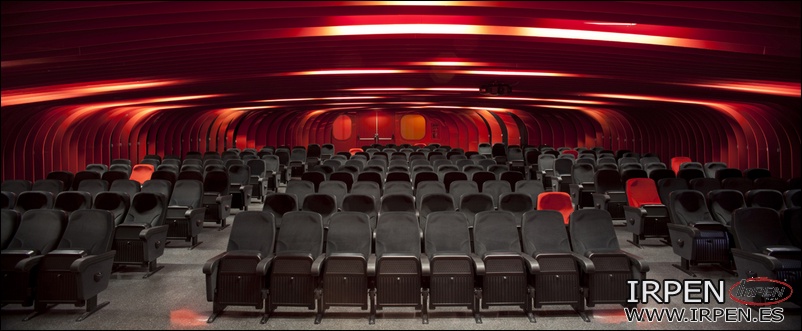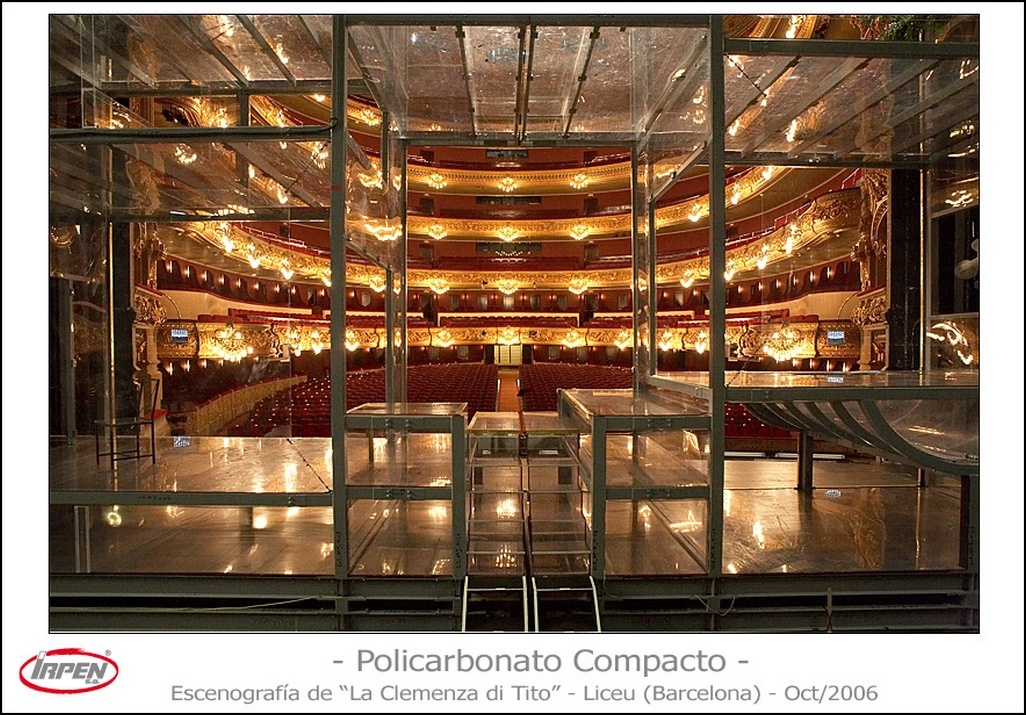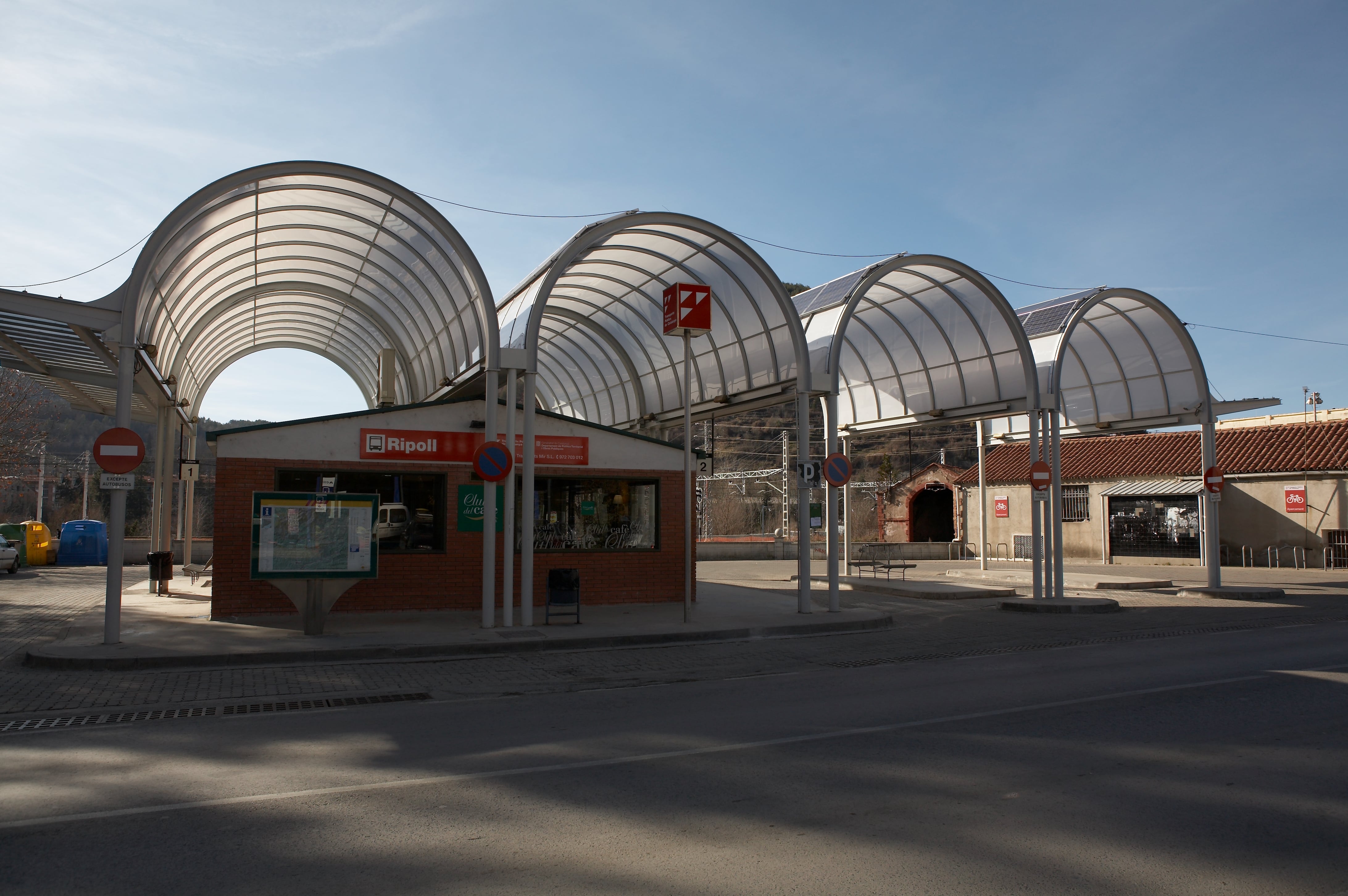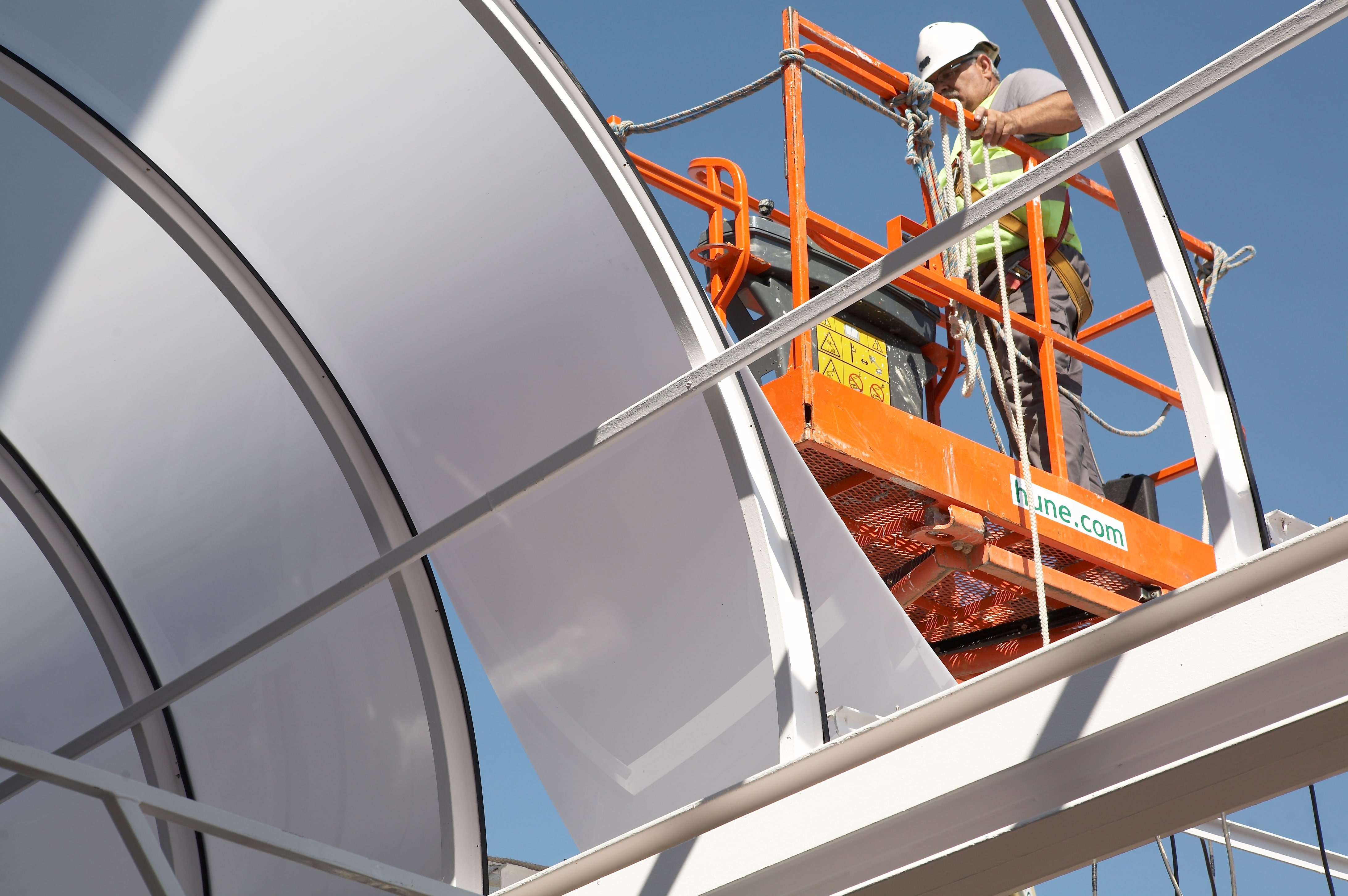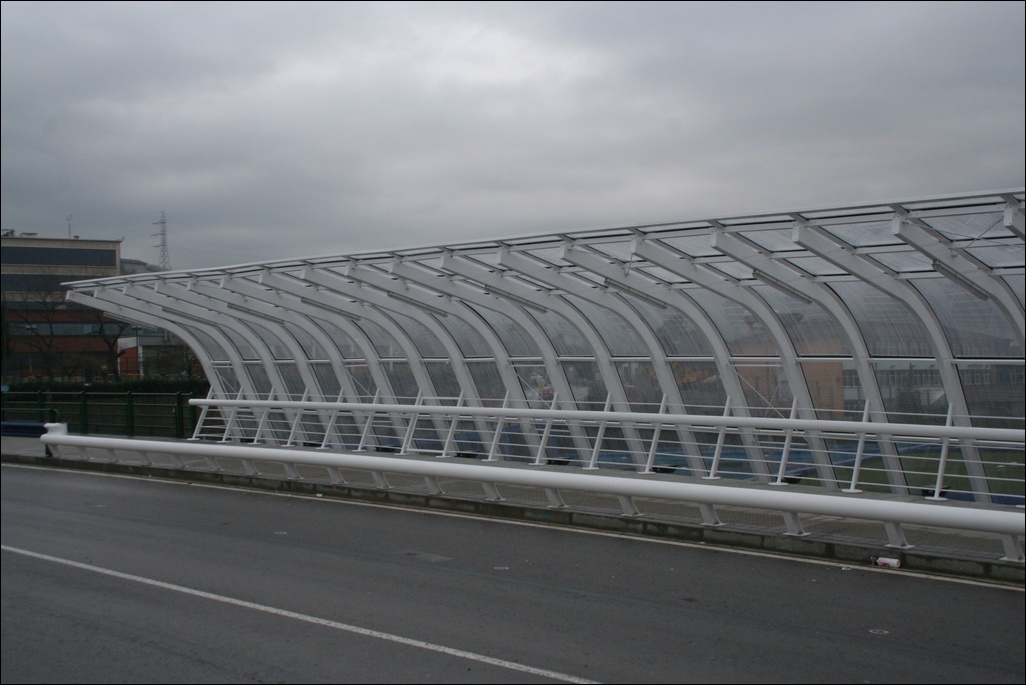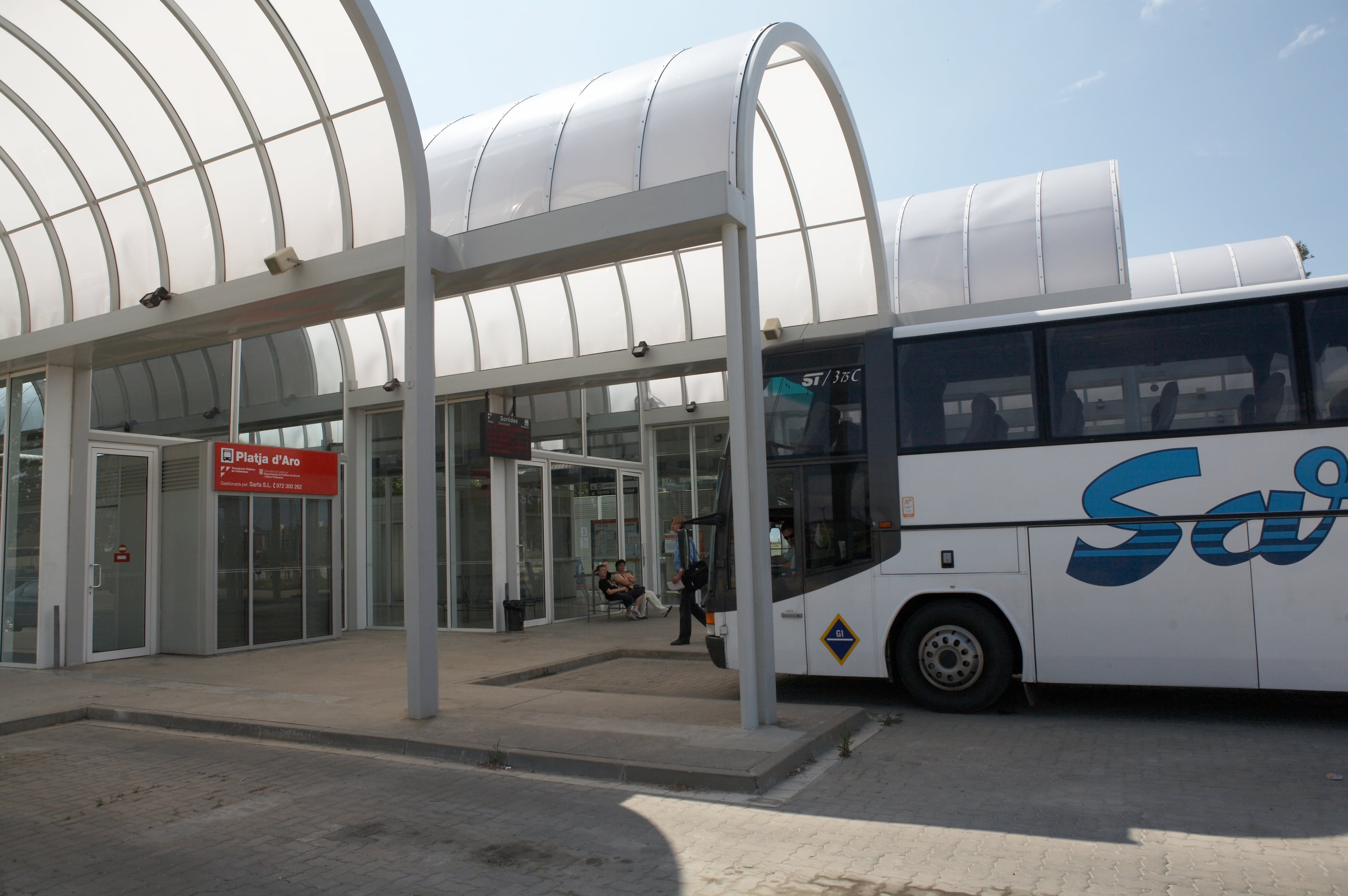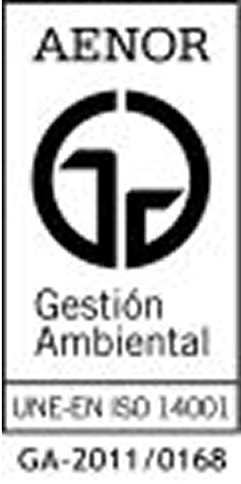Wall Cladding with Solid Polycarbonate
Railway sector safety - Technical plastics in compliance with EN 45545

The materials used in the railway sector, in addition to being durable and high-performance, are characterized by compliance with very demanding safety regulations, this factor is essential when choosing a thermoplastic for this sector.
In 2013, the European railway standard EN 45545 was approved to harmonize different train management systems, including fire and smoke regulations.
The main objective of the above-mentioned standard is based on the protection of passengers and on-board personnel against fire in the event of fire in railway vehicles. After a few years of transition, starting in March 2016, it became the only railway fire protection standard and replaced national standards.
In our catalog of technical plastics, we find ones specifically designed to meet the requirements set out in the standard that refer to fire, amount of smoke generated and toxicity and thus increase safety in the event of a fire on board. The materials used in trains must comply with the EN 45545 standard, European regulation on fire protection in railway vehicles.
Standard EN 45545
In general, to comply with EN 45545, materials must behave in a specific way when exposed to fire:
- Flame retardants
Thermoplastics that comply with EN 45545 contain flame retardants so that, in the event of a fire, the materials do not contribute to the spread of fire, so that more time is available to evacuate railway cars safely.
- Low smoke generation
In order to comply with the EN 4554 standard, suitable technical plastics are characterized by a low emission of smoke in the event of a fire, thus helping to prevent smoke penetration.
It is very important that the density of the smoke generated in the event of a fire is as low as possible, since this will allow passengers and crew to be evacuated as quickly as possible without the dangers caused by smoke inhalation.
- Low toxicity
Many plastic materials are characterized by emitting extremely dangerous toxic gases in the event of a fire.
Thermoplastics designed to comply with EN 45545 are formulated for low toxicity, such as our PC07 Lexan F2000, so that both staff and passengers are exposed to the absolute minimum amount of smoke.
This standard consists of seven parts, covering different aspects ranging from the design, manufacture and assembly of the railway vehicle to its stage of operation and use. The parts are as follows:
- EN 45545-1 Part 1: Generalities.
- EN 45545-2 Part 2: Requirements for the fire behavior of materials and components.
- EN 45545-3 Part 3: Fire resistance requirements for fire barriers.
- EN 45545-4 Part 4: Fire safety requirements in the design of railway rolling stock
- EN 45545-5 Part 5: Fire safety requirements for electrical equipment including those for trolleybuses, road-guided buses and magnetic levitation vehicles.
- EN 45545-6 Part 6: Fire control and management systems
- EN 45545-7 Part 7: Fire safety requirements for flammable liquid and gas installations
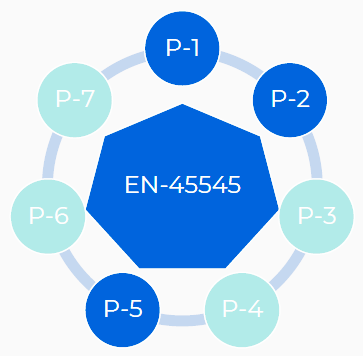
AT 45545-2
In section 2 of the standard, the requirements regarding the reaction to fire of materials and components in railway vehicles are specified, depending on their use, whether they are coverings, seats, luminaires or electrical wiring, among others.
Based on the operational and design categories defined in part 1 of the standard, a risk level matrix is generated, which is defined in this section of the standard.

This matrix defines three levels of risk, the most demanding being HL3. Thus, for example, a railway vehicle intended for a tram will fall within the risk level HL1, while another one destined for a subway will fall within the risk level HL3.
In this section, a railway vehicle is separated, distinguishing between listed and unlisted products. The objective is that, all material installed in a railway vehicle must be included in a category or subcategory:
- Listed products (48 components):
IN1-IN16 for products located inside.
EX1- EX12 for outdoor location.
F1-F5 for furniture.
EL1-EL10 for electrical equipment.
M1-M3 for mechanical equipment.
- Unlisted products
Products that do not fall into the listed category and with possible indoor or outdoor location.
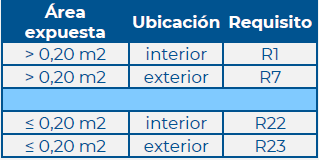
Depending on the type of product to be classified and its location in the railway vehicle, EN 45545-2 specifies 26 requirements to be met, ranging from R1 to R26. Each of these requirements determines:
- Tests to be carried out.
According to the specified requirement, a series of tests must be carried out.
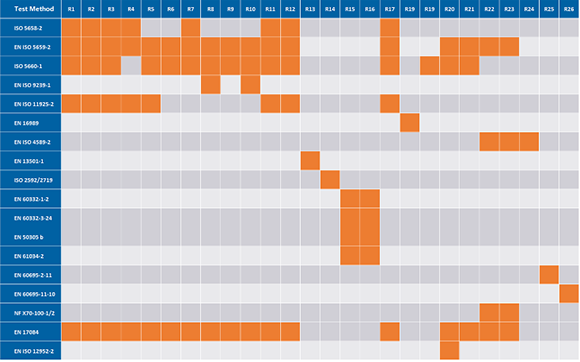
- Parameters to be evaluated.
- Values to be met depending on risk levels HL1, HL2 and HL3 (depending on the vehicle design and operational category).
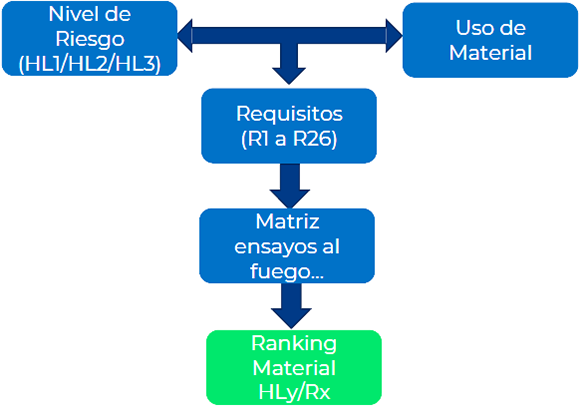
Case Study
Next, for illustrative purposes, we will proceed to determine what requirements and tests a product should pass in a specific case for study.
They ask us for a material suitable for a plastic interior luminaire screen, which will be installed in a subway car.
With these investigations we should consider the following:
1. It is a listed product, installed indoors with an IN3B category of light diffusers.
For this type of product, consulting the table of requirements of standard EN 45545-2, it tells us what requirement it is, in this case it would be an R4.
2. As it is a subway car, it falls into operational category 4 and can be considered a design category A (vehicle that is part of an automatic train without a crew trained for emergencies on board). Therefore, based on the risk matrix, it is determined that the risk level HL3 corresponds to it.
3. The following table shows the tests to be performed, the parameters to be quantified and the maximum or minimum values required for a product that must meet Requirement 4 (R4).

In this case, after examining the products in our catalog suitable for railway use, we chose our PC07 Lexan F2000 that would meet the R4 requirement for risk level HL3 in thicknesses from 2 mm to 4 mm (both included).

